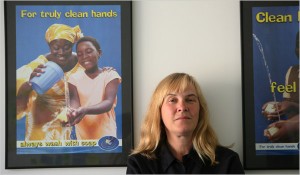
A couple of weeks ago, I wrote:
“If the need for a product has to be created by the manufacturer, if aggressive marketing is required to convince people to buy the product, can the product, no matter how renewable its materials, really be called sustainable? Because isn’t using resources to make things we don’t even need the definition of waste?”
If you’re in the business of convincing people to use resources they wouldn’t otherwise use, in other words, you could be doing better on your eco-credentials. The New York Times, this Sunday, provided two excellent examples to show the difference between servicing real need and filling created need.
As the Times story goes, many companies have perfected the art of instilling habits among consumers.
“For most of our history, we’ve sold newer and better products for habits that already existed,” said Dr. Berning [a now-retired Procter & Gamble] psychologist. “But about a decade ago, we realized we needed to create new products. So we began thinking about how to create habits for products that had never existed before.”
As an example of creating need, in 1996, Procter & Gamble launched a product called Febreze, essentially perfumed water. P&G developed Febreze to spray on clothes that smelled, for example, of cigarette smoke. Febreze flopped.
The reason, P&G discovered, was that bad smells didn’t occur often enough in consumers’ lives for them to develop a product-use habit. Even if they bought the product, they’d forget they still had it by the time their clothes smelled of smoke again.
In other words, to my way of thinking, the product served no real need.
But instead of canceling it, P&G decided to manufacture a need–to convince people to use planetary resources to service a need that did not exist until P&G created it.
They began looking for “cues” that would cause consumers to use the product more frequently than the smell of smoke–and, so, form a habit. The cue they eventually settled on was the act of cleaning a room, something studies showed the target audience did almost daily.
“We learned from consumer interviews that there was an opportunity to cue the clean smell of Febreze to a clean room,” Dr. Berning said. “We positioned it as the finishing touch to a mundane chore. It’s the icing that shows you did a good job.”
The result is $650 million a year for P&G in the United States alone. And what does the world get in return?
On the other hand, let’s take an example of filling a real need:
A FEW years ago, a self-described “militant liberal” named Val Curtis [pictured above] decided that it was time to save millions of children from death and disease. So Dr. Curtis, an anthropologist then living in the African nation of Burkina Faso, contacted some of the largest multinational corporations and asked them, in effect, to teach her how to manipulate consumer habits worldwide.
In other words, Curtis wanted to use the same techniques that got Febreze flying off the shelves to fill a real rather than a manufactured need. She convinced P&G, Colgate-Palmolive and Unilever–all of whom “had invested hundreds of millions of dollars finding the subtle cues in consumers’ lives that corporations could use to introduce new routines”–to sign onto the Global Public-Private Partnership for Handwashing with Soap.
The result is a reported upsurge in handwashing with soap before eating by 41 percent in Ghana. Why is this important? Because “diseases and disorders caused by dirty hands — like diarrhea — kill a child somewhere in the world about every 15 seconds, and about half those deaths could be prevented with the regular use of soap, studies
indicate.”
So there we have them: two organizations pushing personal/home care products, one serving a real need and one serving a manufactured need. One causing the use of resources for no real reason; the other causing the use of resources to save children’s lives.
The question is, simply, as our culture becomes more and more concerned with green issues, which organization would you rather be? Would you rather be the kind of organization that is seen to manufacture needs and unnecessarily cause resource use?
Or would would you rather be the type that is seen to use our dwindling precious resources in the service of humankind?
In short, would you rather do business and be involved with an organization that saves children’s lives by convincing people to use soap or one that makes people feel they haven’t quite finished the hard work of cleaning a house unless they spray chemicals all over it?
Photo courtesy of The New York Times.